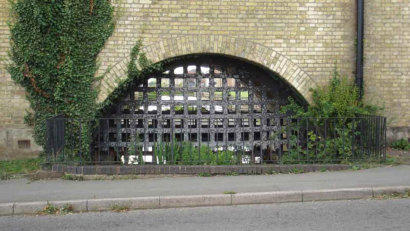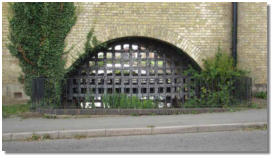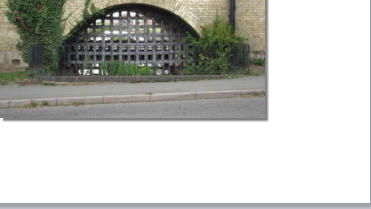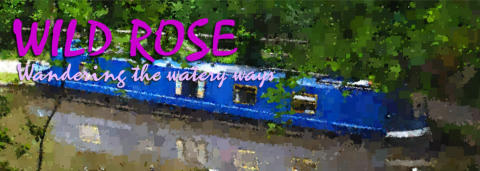

BACKS TO THE WALL CHAPS, IT'S WEEDON BEC !
Located in the rural tranquillity of Northamptonshire this sleepy village has the tremendous
distinction of once largely belonging to Eton College who received it as a gift from Henry VIII.
The Roman Road of Watling Street (A5) known, apparently, as “Road Weedon” runs through the
village. Possibly the name came from the Old English "Wēo-dūn" meaning "Temple Hill" in which
case there was a pagan temple somewhere, perhaps still is. The “Bec” part comes from the Abbey
of Bec-Hellouin in Normandy who owned most of the area until Henry nicked it. Together with the
mighty roar of traffic on the A5 there is the scream of Richard Branson's Pendolinos racing down
the West Coast line and crossing a viaduct just by St. Peter's Church perhaps disturbing the Sunday
somnolence of the congregation. But on the plus side there is the soothing thud thud sound of
classic diesel engines powering narrow boats on the Grand Union Canal.
Which brings us, of course, to King George III who planned to cower in a bolt hole in the village
whilst Napoleon rampaged through this Sceptred Isle, as seemed imminent. By the time of George's
shivery fit the Canal had reached Weedon Bec and was suitable for transporting troops efficiently
from London. Barracks and ordnance buildings were built together with a royal pavilion in which
the King could tremble in comfort, all served by a spur from the main canal.
Ordnance buildings remain but the Pavilion has gone. Part of the spur remains, marked by a
portcullis which is slightly eerie. Weedon Bec had its moment and has gone back to sleep again.




nb Wild Rose

BACKS TO THE WALL CHAPS,
IT'S WEEDON BEC !
Located in the rural tranquillity of Northamptonshire this
sleepy village has the tremendous distinction of once
largely belonging to Eton College who received it as a gift
from Henry VIII.
The Roman Road of Watling Street (A5) known,
apparently, as “Road Weedon” runs through the village.
Possibly the name came from the Old English "Wēo-dūn"
meaning "Temple Hill" in which case there was a pagan
temple somewhere, perhaps still is. The “Bec” part comes
from the Abbey of Bec-Hellouin in Normandy who owned
most of the area until Henry nicked it. Together with the
mighty roar of traffic on the A5 there is the scream of
Richard Branson's Pendolinos racing down the West Coast
line and crossing a viaduct just by St. Peter's Church
perhaps disturbing the Sunday somnolence of the
congregation. But on the plus side there is the soothing
thud thud sound of classic diesel engines powering
narrow boats on the Grand Union Canal.
Which brings us, of course, to King George III who
planned to cower in a bolt hole in the village whilst
Napoleon rampaged through this Sceptred Isle, as seemed
imminent. By the time of George's shivery fit the Canal
had reached Weedon Bec and was suitable for
transporting troops efficiently from London. Barracks and
ordnance buildings were built together with a royal
pavilion in which the King could tremble in comfort, all
served by a spur from the main canal.
Ordnance buildings remain but the Pavilion has gone. Part
of the spur remains, marked by a portcullis which is
slightly eerie. Weedon Bec had its moment and has gone
back to sleep again.


Wandering the Watery Ways…
















